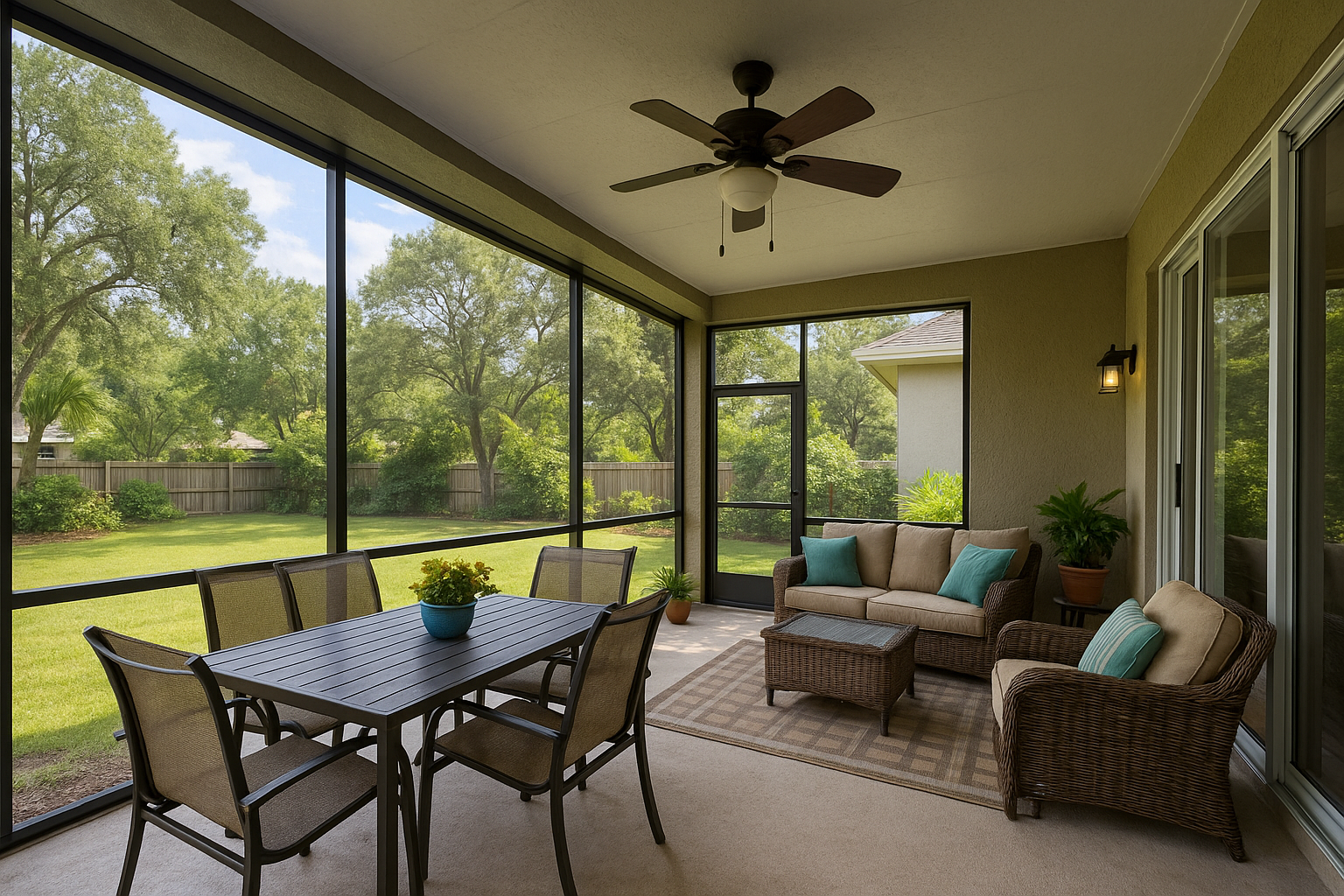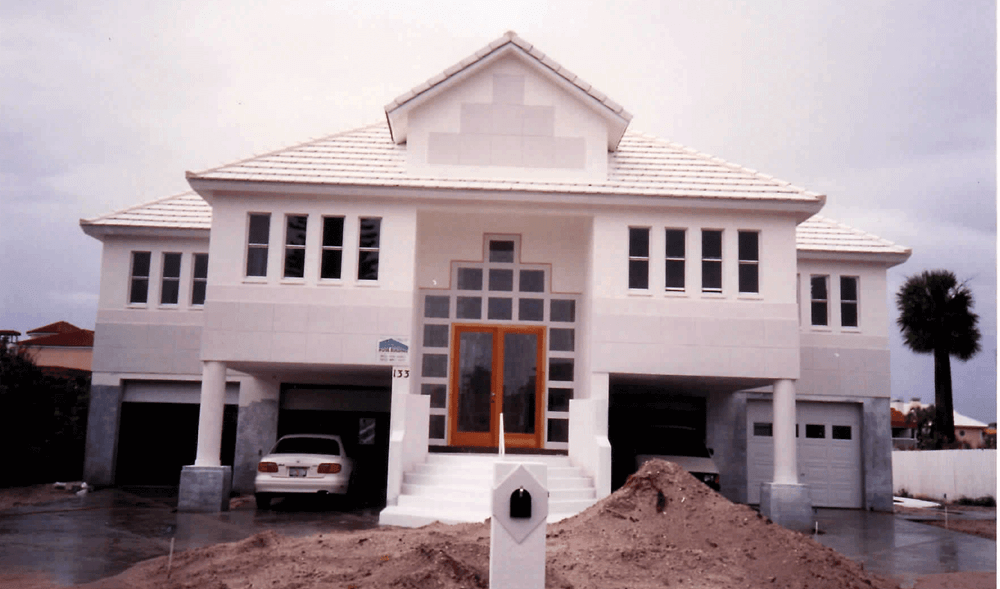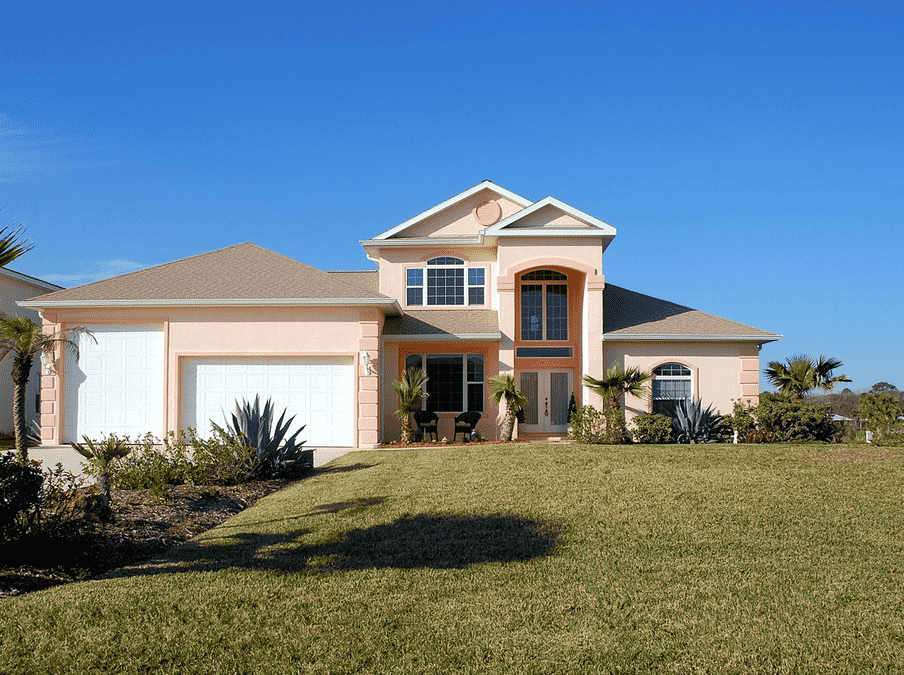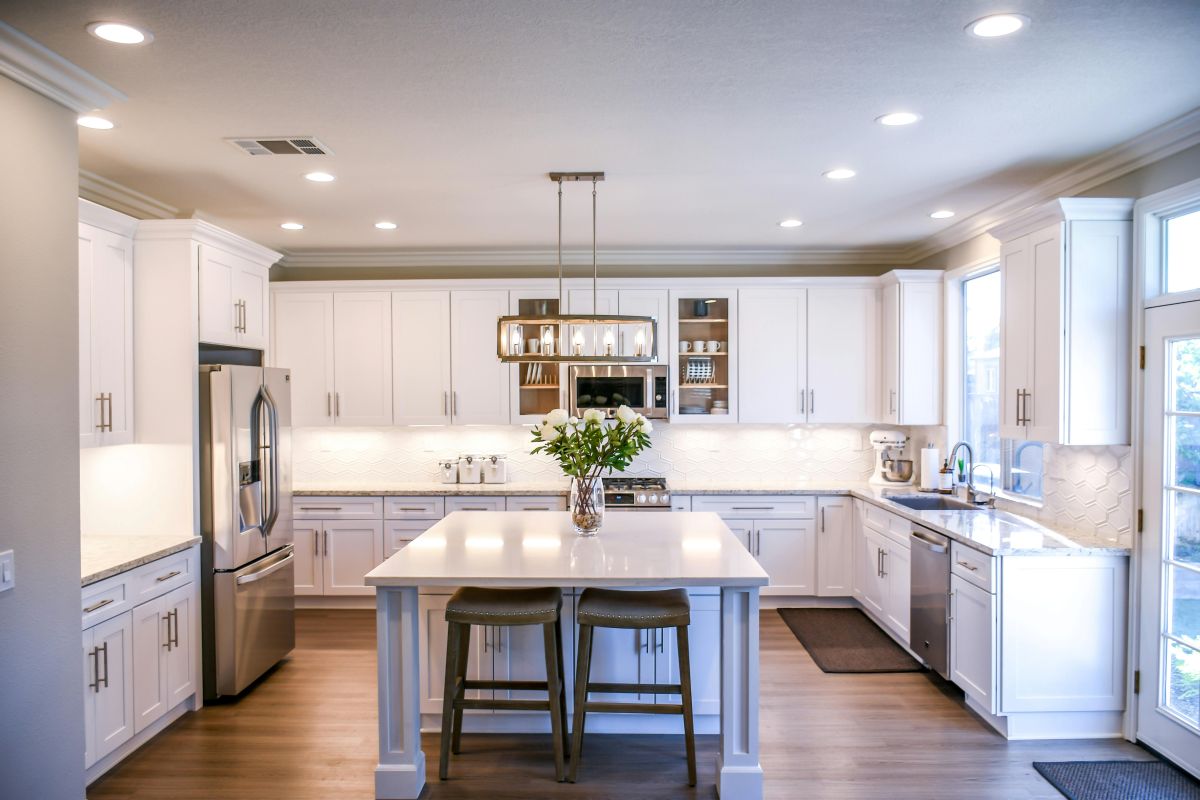By using our website, you agree to the use of cookies as described in our Cookie Policy
a
Rss Feed
Smart Building Technologies: The Future of Commercial Real Estate
Imagine walking into an office that changes lighting based on your mood, adjusts the temperature to how you feel, and even catches, in advance, when something is on the verge of breaking down to schedule maintenance. Sounds like science fiction, doesn't it? This is the world of smart building technologies, and it's transforming commercial real estate as we know it. With rapid tech advancements, buildings are becoming more efficient, sustainable, and tenant-friendly.
Cutting-Edge Technologies Driving Smart Buildings
Innovations make our spaces more intuitive and responsive to human needs, finally setting a new standard for commercial real estate. Some of the new technologies driving smart buildings that we need to consider are:
Internet of Things (IoT) in Smart Buildings
The Internet of Things connects devices around us to the internet, after which they are in a position to communicate and work intelligently. IoT is applied in commercial buildings to provide smart solutions for lighting and HVAC systems that would be intuitive about occupation and usage patterns to assure enhanced comfort and energy efficiency.
Building Management Systems (BMS)
It supports the central control of various building operations, such as heating, ventilation, air conditioning, lighting, and security, among others. The BMS system interfaces with these to enhance operational efficiency by reducing energy use and bringing about a number of benefits associated with reduced maintenance costs, hence making a building more efficient and green.
Artificial Intelligence (AI) and Machine Learning (ML)
Buildings can leverage AI and machine learning to execute predictive analysis in anticipation of maintenance demands and optimization of operations. Among the AI-driven applications are energy optimization, which correctly adjusts systems for maximum efficiency, and security management, involving the detection of unusual activities that improve safety measures.
Advanced Sensor Technology
Modern smart buildings are integrated with occupancy sensors, environmental sensors, and motion sensors. All these sensors collect real-time data about the condition of a building and usage patterns to let the lighting, heating, ventilation, air conditioning, and security systems work responsively in the interest of optimum performance and energy efficiency to derive comfort for the occupants.
The Transformative Benefits of Smart Building Technologies
There are plenty of benefits associated with smart building technologies. The Edge, for example, is an office building nearly certified to be among the world's greenest in Amsterdam. Advanced systems cut energy use while increasing occupant comfort.
Energy Efficiency and Sustainability
Smart buildings play an enormous role in energy saving. Its IoT devices and AI-driven mechanisms would adjust heating, cooling, and lighting in real-time data. For example, when a room is empty, sensors turn off the light and adjust the thermostat to cut down on excess energy use.
Some of the key environmental benefits with possible cost savings are:
- Smart lighting and HVAC less energy will be consumed.
- Minimize the carbon footprint by optimizing energy consumption.
- Integration of renewable sources of energy together with smart grids.
- Better efficiency in building operations.
- Less e-wastes and emissions are better for the environment.
Enhanced Security and Safety
Security in smart buildings stretches beyond locks and cameras to include more advanced technologies like biometric access control, whereby access is granted only based on authentication. Smart surveillance systems, because of AI, track activity and report any dubious activity to the security teams.
- Biometric access control for safe entry
- AI-driven smart surveillance that tracks activities in real-time
- Automated alert and response against threats
- Better coordination of emergency response
- Safety protocols made better through continuous monitoring.
Increased Occupant Comfort and Productivity
Smart buildings facilitate ease and comfort in life for all those operating within them. Through the use of personalized settings, it allows for people to control their workspaces from light to temperature adjustment based on their preference. These add to the satisfaction and productivity of the tenants. Examples include the following:
- Customized Lighting and Climate Control
- Improved indoor air quality using intelligent ventilation
- Responsive, adaptive workspaces.
- Advanced noise reduction acoustic management
- Enhanced all-round tenant experience and satisfaction.
Improved Comfort and Productivity of Occupants
Smart buildings simplify life and add comfort to all who occupy them. Because of personalized settings, the place each employee will be working at will be controlled down to the light they want, the temperature, and everything else to their liking. The comfort attained from personalization enhances tenant satisfaction and consequently their productivity.
- Personalized lighting and climate control.
- Improved indoor air quality by smart ventilation.
- Adaptive workspaces that answer occupant needs.
- Smart acoustic management for noise reduction.
- Improved tenant experience and satisfaction.
Operational Efficiency and Predictive Maintenance
Predictive maintenance can be considered one of the most significant benefits of smart buildings. AI constantly monitors building system performance, which allows it to foresee when maintenance is required so that breakdowns are prevented and downtime is minimized. All this ensures a smoothly running operation.
In the following four ways, smart technologies contribute in this area:
- Uptime with almost minimal or no downtime because of on-time maintenance
- Building systems and equipment have longer lives.
- Lower maintenance costs--avoiding emergency repairs
- Easier operations because automation will adjust systems.
Strategies for a Successful Smart Building Implementation
The implementation of the smart building technologies requires a well-thought-out plan and execution. For example, advanced systems are installed in the Burj Khalifa to attain efficient energy use and improve the comfort of occupants.
Planning and Design
For maximum accrual of benefits, smart technologies have to be integrated at the initial design stage of the building. This will allow all systems to work in harmony for higher efficiency with cost savings. Best practice for planning and designing smart buildings includes:
- Holistic Approach: Approach taken as a whole with respect to the set of building systems and how they interrelate.
- Future Proofing: Designing for flexibility and scalability toward changing technology.
- Involvement of Stakeholders: Involve architects, engineers, and technology experts at the outset.
- Sustainable Emphasis: Environs friendly technologies emphasizing less potential harm to the environment.
- User-Centric Design: The building answers all the requirements of its users for its proper acceptance and satisfaction.
Selection of Appropriate Technologies
Identification and selection of proper smart technologies in buildings is key to address special needs. Energy-efficient HVAC and lighting systems at The Crystal, London, were selected with great success; they cut down energy use significantly while improving the comfort of occupants. Selection criteria include:
- Compatibility: All technologies will work together seamlessly.
- Scalability: This means choosing solutions that can grow and evolve with the building.
- Cost Effectiveness: Upfront cost must be weighed against the benefits of long-term savings.
- Ease of Use: Choose systems that are easy to use and maintain.
Integration and Interoperability
The difficulties of integration for various smart systems arise because different protocols and standards are used. Solutions that ensure interoperability include the following:
- Open Standards: Apply systems that support open standards for easy integration.
- Centralized Management: Allow a centralized building management system that monitors several smart technologies.
- Vendor Collaboration: Be keenly collaborative with technology vendors to be guaranteed technical support in terms of compatibility and integration.
- Regular Updates: Ensure an update of the systems to guarantee compatibility and maintenance of performance.
- Training: Facilitating relevant, current, and appropriate training to facility management teams in ensuring adequate handling of integrated systems effectively.
Overcoming Challenges of Implementing Smart Buildings
Successful adoption of smart building technologies can be very challenging, but these barriers can be circumvented. For instance, New York's Hudson Yards overcame financial, technical, and regulatory challenges to emerge as one of the world's most innovative smart building projects.
Financial and Budgetary Constraints
Adopting smart building technologies can be very expensive. One major challenge presents itself at the initial costs, and then there are the continuous maintenance costs associated with these technologies. Several funding solutions and incentives help to alleviate this financial sting.
- Government grants and subsidies for energy-efficient projects.
- Low-interest loans specifically for smart building upgrades.
- Tax incentives for investments in green technologies.
- Energy savings performance contracts.
- Utility rebates for installing energy-efficient systems.
- Crowdfunding and public-private partnerships.
- Perform phased upgrades to spread out the costs.
Technical and Integration Challenges
Technical challenges to the implementation of smart systems include integration and compatibility issues. Solutions and best practices for seamless integration include:
- Selection of systems based on open standards for better interoperability;
- Gradual implementation of technologies in order to manage their integration;
- Central management and coordination;
- Hiring or consulting of experts with respect to smart building technologies; and
- Monitoring the systems, with updates on regular intervals in order to promptly solve technical problems.
Regulatory and Compliance Issues
The regulatory framework of smart buildings is complex and dynamic. Knowledge and proactive measures at every level are needed in order to comply. These levels include the following:
- Staying up-to-date with local and national regulations
- Collaboration with pertinent authorities early in the planning phase
- Integrating compliance checks within the project timeline
- Legally certified technologies shall be implemented
- Audits for continuous compliance shall be conducted
- Legal advice shall be sought on how to navigate more complex regulations
- Comprehensive documentation kept for all efforts taken towards compliance.
The Future Landscape of Smart Buildings
Emerging Technologies to Watch
The future for smart buildings is pretty exciting with some cool technologies up and coming. Here are five to keep an eye on:
- 5G Connectivity: Faster, more stable Internet connectivity will enable interconnection between IoT devices, allowing processing and incorporation into real-time data.
- Edge Computing: Tends data processing at the sources to reduce data latency and efficiency of building management.
- Blockchain Technology: To enhance the security of smart buildings and to further workforce efficiency in transactions and data-sharing across those buildings.
- Artificial Intelligence and Machine Learning: New and improved to provide more advanced functionality for predictive maintenance applications and energy management.
- AR and VR: Supports in designing, administration, and operation of buildings with the help of multimedia installations.
Integration with Smart Cities
Smart buildings are one of the integral parts of a smart city. They integrate well with the urban infrastructure to make a city more efficient and livable. Some benefits of these integrated urban ecosystems include:
- Increased energy efficiency at an aggregate city scale.
- Improved management of traffic reduces congestion.
- Better resource allocation and waste management.
- Improved security of the citizens through coordinated security systems.
- Improved quality of life from smarter public services.
Evolution of Standards and Best Practices
As standards and best practices for smart buildings are evolving, keeping up with these evolving standards ensures safe, efficient buildings that are future-proof.
- Ensures compatibility and future-proofing.
- Protects against increasingly sophisticated threats.
- Comply with environmental regulations; work in partnership with consumers.
- It makes informed decisions and enhances operational efficiency.
- Keeps employees abreast of the introduction of new technologies.
The Bottomline
Smart building technologies will transform commercial real estate, making its spaces substantially more efficient, sustainable, and comfortable in the near future. Leveraging IoT, AI, and innovative sensors, we can enhance how our buildings work and how they work with us.
As such, there is no sustainable development for commercial spaces without them. It is our responsibility as stakeholders to finance and back the development of smart buildings to prepare for the unpredictable future. Now is the time to reimagine our way of understanding real estate –our buildings are no longer objects or even buildings but living, adaptive systems.
‹ Back






.png)
